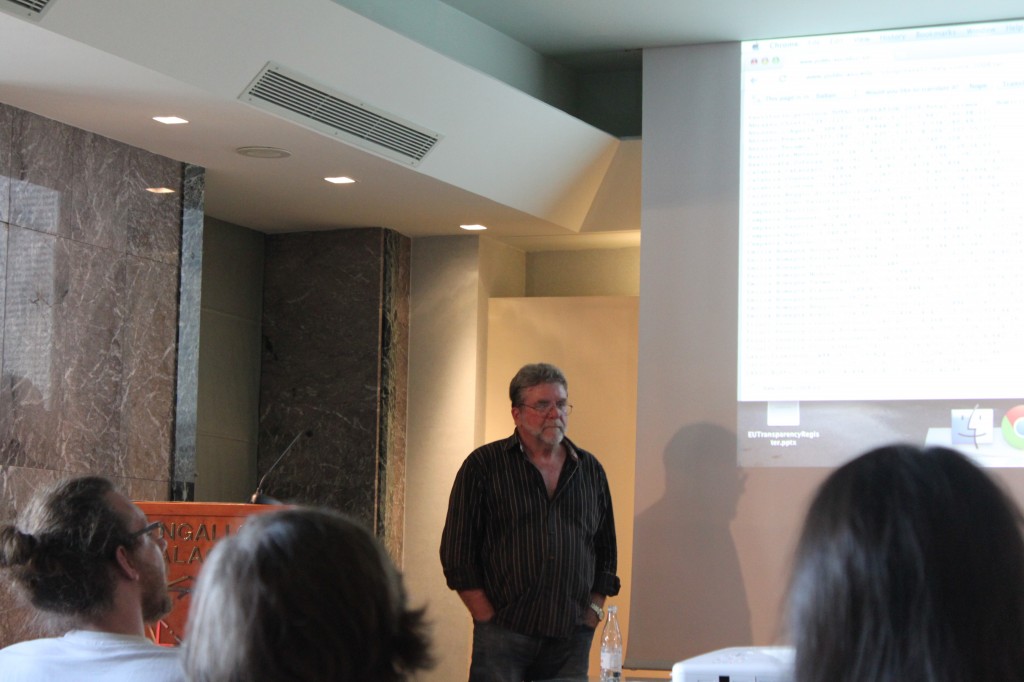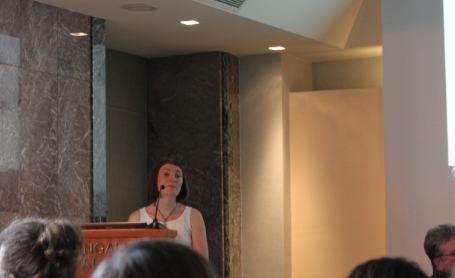How to become a data journalist: day 3
As the School of Data Journalism at the International Journalism Festival in Perugia approaches its end, Prof. Steve Doig and investigative journalist Caelainn Barr dived into the skill of getting stories from data.
The last but one workshop of the Data Journalism School was in part a revision of what Prof. Doig had already explained in his first session, while Barr brought her work on the E.U. structural funds as a case study to put theory into practice.
One of the lessons the audience of the festival will surely bring home is the invaluable importance of Microsoft Excel as a tool for data journalism. Prof. Doig and several other speakers of the data journalism panels and workshops stressed many times how everything starts with a simple excel sheet.
“Once you open the file one of the most basic things you can do is look for outliers: check who is the most, who is the least, the best and the worst performer in your list. If the descriptions matching the items in your file don’t tell you much to understand what the data refers to, you will have to dig deeper with the authorities who provided the dataset” he said demonstrating how to filter, sort and do basic calculations on an Excel file retrieved from ISTAT, the Italian institute for national statistics.
“There are stories everywhere in data. Even the simple fact of being denied data by a given body is a story in itself. If you look at the columns in the spreadsheet, that will tell you what kind of stories you can get out of it. The secret to find stories in data is finding paths, which are often revealed by doing calculations” he added.
Caelainn Barr introduced her work on the E.U structural funds, a project which took nine months and an immense amount of work to clean data, which came in all sorts of formats and sometimes (such as in Italy’s case) were “diabolical”.
“This comes from the fact that all member states are required to publish this information but the Commission did not establish a mandatory format for them to do so” explained the investigative journalist, who worked for the Bureau of Investigative Journalism for the project.
As she worked through the E.U. analysis of structural funds recipients, Barr realised that “regional authorities had no clue how the money was being spent because they did not have a database storing this information. All this details were out there but they were in a diabolical state that took ages to compare.”
The database is now public and available for everybody to extract more stories: “We encourage you to use the database and absolutely get in contact if you have a new project you would like to work on. We had media and broadcast companies interested in stories generated from the database: for example the BBC was interested in Italy and Spain, and Al Jazeera did a report about the Italian mafia and structural funds.”
Once again the venue of the workshop held at hotel San Gallo was full of data enthusiasts who also engaged in yet another Q&A session towards the end of the meeting.
Prof. Doig concluded reminding the audience how: “The most important question to ask in any story is why. It is the same with data journalism: once you identify a pattern, ask why that is. Ask the police, the people, the authorities and do the same kind of reporting you normally do in your journalistic profession. Data journalism is just another source, it is a step to the story, it is not a different way of thinking” or, to use the words of Pulitzer Prize winner Paige St. John “doing data journalism is not a way to stay away from the streets.”
The last workshop of the Data Journalism School will take place on Sunday 29th April at 14:00 at Hotel San Gallo.
Claudia Costa


